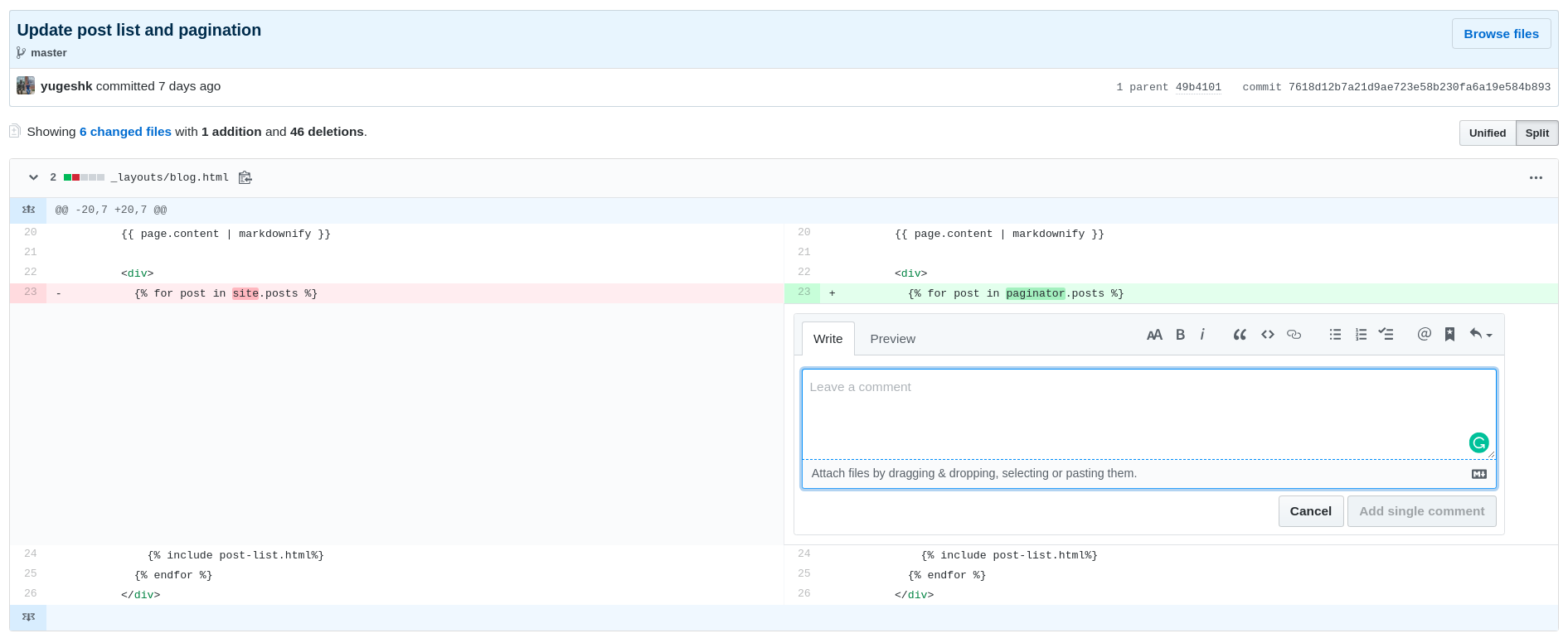

- #Github view commit history Patch#
- #Github view commit history code#
- #Github view commit history download#
gitignored the secrets.yaml file, but I hadn’t properly removed some of the files Home Assistant generates – and one of them contains plenty of credentials.

Git remote add origin /username/myrepoĪnd there you go! Let me know how it goes for you, and which secret you ended up committing by mistake! 😁įor your information, mine was a token used in my Home Assistant configuration – I had. You can select a repository from the repository picker to view the history of a particular repository. Build and PR information - You can view the pull request that brought this commit to the branch selected on the page, and view the build status of the current commit. The following will add your repo on GitHub as an origin and force push your changes there, overwriting the whole history. You can click on a commit ID or commit message to open the commit details page.

Git commit -m "Removed history, due to sensitive data" identifier for the commit, and is used by Git to index project history. Okay, now you’re ready to commit your actual files. In Figure 12.1, you can see two such messages, one for each commit: Created. You can view the commit history of the branch if you want to see how the contributor arrived at the set of changes theyre suggesting. For more information, see 'Configuring a default editor in GitHub Desktop.' View the commit history. This time, make sure NOT to commit anything you don’t want everyone else to see! In the 'GitHub Desktop' menu bar, select Repository. git log -oneline is a great way to view commit history by displaying the first seven characters of.
#Github view commit history code#
Now that the existing history has been destroyedĪt this point, your repository is empty with plenty of code to commit. git log -10 will only show the 10 most recent commits. Though opening a connection and calculating deltas during fetch takes some time.īoth are really fast but have different interfaces (like every platform).In whatever cool operating system the youngsters now use: If the repository you are committing to has compulsory. Git assigns each commit a unique ID, called a SHA or hash, that identifies: When you make a commit, you must include a commit message that briefly describes the changes. The activity view displays all pushes, merges. Similar to saving a file thats been edited, a commit records changes to one or more files in your branch. If you want to see a detailed history of changes to a repository, you can use the activity view. Git log -n 3 -no-decorate -format=oneline origin/masterīoth are optimized for performance by restricting to exactly 3 commits of one branch into a minimal local copy without file contents and preventing console outputs. Commit co-authors are included in the commit activity summary if their commits were merged into the repositorys default branch and theyre in the top 15 users who have contributed the most commits. Git log -n 3 -no-decorate -format=oneline ) but fetching data is pretty slow (we talk about seconds) - no solution is perfect.Īn example with fetching into a temporary directory: git clone -b master -depth 3 -bare -filter=blob:none -q. It may be annoying to implement for many different platforms (GitHub, GitLab, BitBucket, SourceForge, Launchpad, Gogs.
#Github view commit history download#
#Github view commit history Patch#
Git isn't a centralized scm like svn so you have two options: At the bottom is a view of the selected commit the comments and patch on the left, and a summary view on the right.


 0 kommentar(er)
0 kommentar(er)
